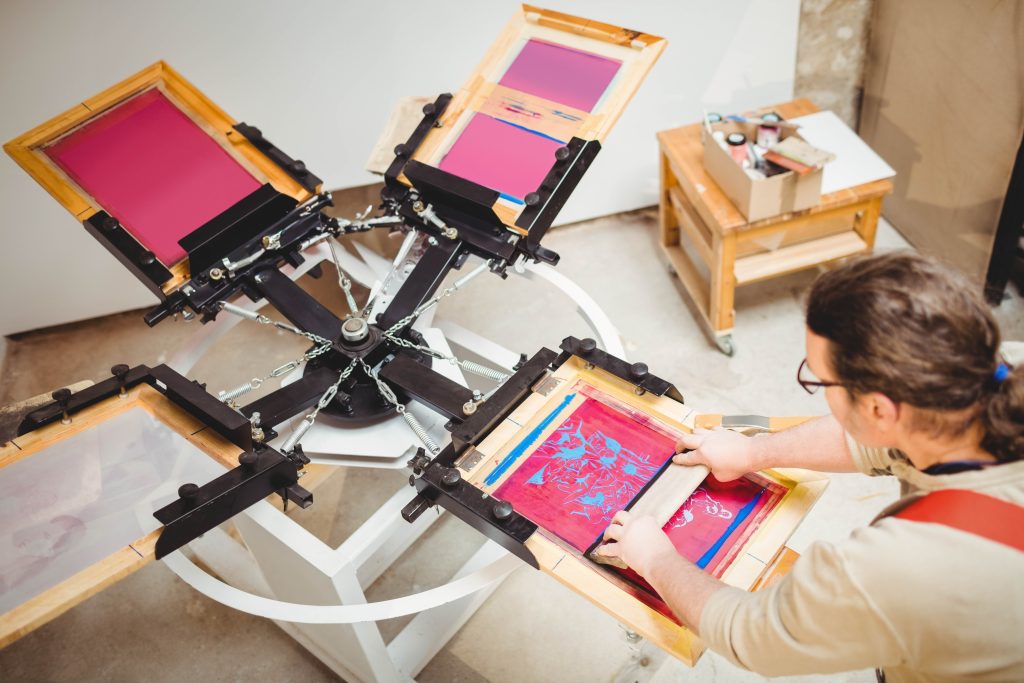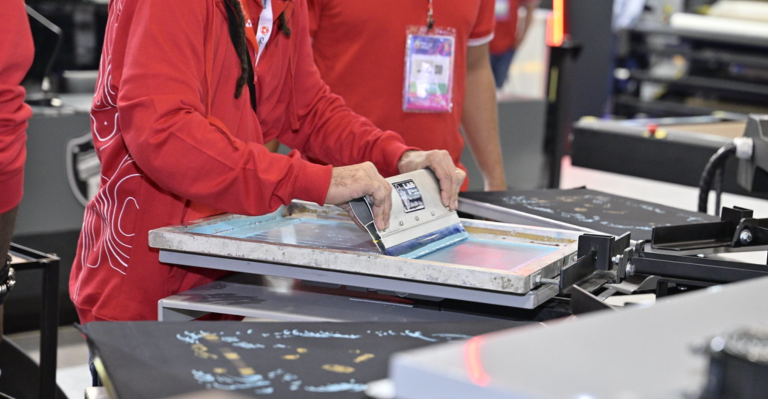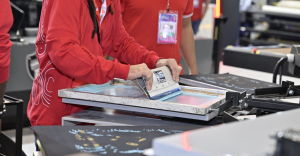Screen printing is a centuries-old printing technique, but it is only in recent decades that its environmental impacts have begun to be discussed with greater urgency. The upcoming COP30, which will take place in Brazil, once again highlights the responsibility of sectors such as printing and textiles in the transition to a low-carbon economy. In this context, sustainable materials for screen printing are no longer just an ethical alternative; they are becoming a technical, economic, and strategic necessity.
Screen Printing, Environmental Impacts, and the Urgency of COP30
The traditional screen printing process uses PVC-based inks and organic solvents, synthetic substrates such as polyester and PVC, and chemical products for screen cleaning. This combination generates waste, effluents, and emissions that contribute to air, water, and soil pollution, as well as increasing the carbon footprint of the production chain.
With COP30 reinforcing international commitments to reduce emissions and promote the circular economy, the pressure for print shops and printing studios to adopt cleaner practices is growing. At the same time, increasingly conscious consumers and stricter environmental regulations are driving green innovation in the printing sector.
Regulations, Market, and Sustainability Standards
In Brazil, companies in the sector are already seeking important certifications, such as ISO 14001, as well as sustainability seals like OEKO-TEX / ECO PASSPORT for certain product lines, such as inks. These recognitions indicate that environmental concerns are already present in the sector, although gaps remain.
Law No. 12,305/2010, which establishes the National Solid Waste Policy, does not specifically address textile and graphic waste, leaving room for regulatory advancements and sectoral discussions to expand applications. Meanwhile, regional and sectoral initiatives, such as those promoted by FIESC in the textile sector, show that sustainability is already central to public policy debates.
New Materials and Organic Compounds: Promising Alternatives
Among the main innovations are water-based inks. In addition to being less toxic, they emit fewer volatile organic compounds, are safer for workers, and have a lower environmental impact. There are also pigments derived from vegetable oils, such as the so-called “soy inks,” already used in some graphic and textile applications. Although soy inks are more widespread in other segments, such as newspaper printing, they can serve as a reference for research in screen printing.
Another area of innovation is alternative substrates to plastic. Biopolymers such as PLA and bio-PET, derived from plant sources, are being studied to reduce the carbon footprint in packaging and printed materials. The use of recycled paper and special treatments is also gaining ground, although it still presents challenges in terms of durability and finish.
There is also research into compostable materials designed to degrade after use under appropriate conditions. However, the effectiveness of this process depends on the availability of composting infrastructure, which remains a limitation in many countries, including Brazil.
Sustainable vs. Conventional: Pros and Cons
Sustainable materials offer clear environmental advantages but also bring practical challenges. While plastisol and synthetic substrates provide high durability and intense colors, water-based inks may require additional techniques to ensure similar coverage and resistance. Economically, green materials tend to have higher costs, but when properly applied, they reduce emissions and enhance brand credibility among consumers and investors.
The transition to more sustainable screen printing requires attention to key points:
- Technical compatibility: Machines, screens, and curing processes need to be adapted to new materials.
- Certifications and transparency: Environmental seals ensure credibility and traceability.
- Process management: From screen cleaning to waste disposal, everything must be rethought to reduce impacts.
- Economic viability: Scaling up usage is essential to reduce costs and justify investments.
- Aesthetic quality: Consumers expect the final result to maintain high durability and finish standards, regardless of the material used.
Opportunities and Challenges in Brazil and Worldwide
Globally, research points to the growth of biodegradable inks, compostable substrates, and even solutions in printed electronics based on green materials. In Brazil, companies are already advancing in water-based lines and environmental certifications, while smaller studios may start offering products such as organic t-shirts printed with non-toxic inks. Still, challenges related to scale, logistics, and import costs limit broader adoption of these materials.

Screen Printing and COP30-Related Perspectives
COP30 is expected to accelerate the adoption of sustainable materials for screen printing by reinforcing requirements such as sustainability reports, stricter standards for toxic waste, tax incentives for innovation, and increased consumer pressure. The expectation is that companies will be increasingly required to ensure traceability of their production chain, from the origin of raw materials to final disposal.
COP30: A Moment of Transformation for All Sectors
Sustainable materials for screen printing, such as biodegradable inks, organic substrates, biopolymers, and compostables, are no longer just a trend but an essential part of the sector’s future. The transition involves costs, technical adjustments, and the pursuit of certifications, but it offers strategic advantages such as market differentiation, customer loyalty, and alignment with global sustainability goals.
For those starting out, take gradual steps: evaluate which inks can be replaced, identify more sustainable substrates, and rethink disposal processes. Sustainable screen printing is a concrete and strategic evolution, and those who anticipate it will not only be better prepared to meet post-COP30 requirements but also leave a positive mark on the planet.




